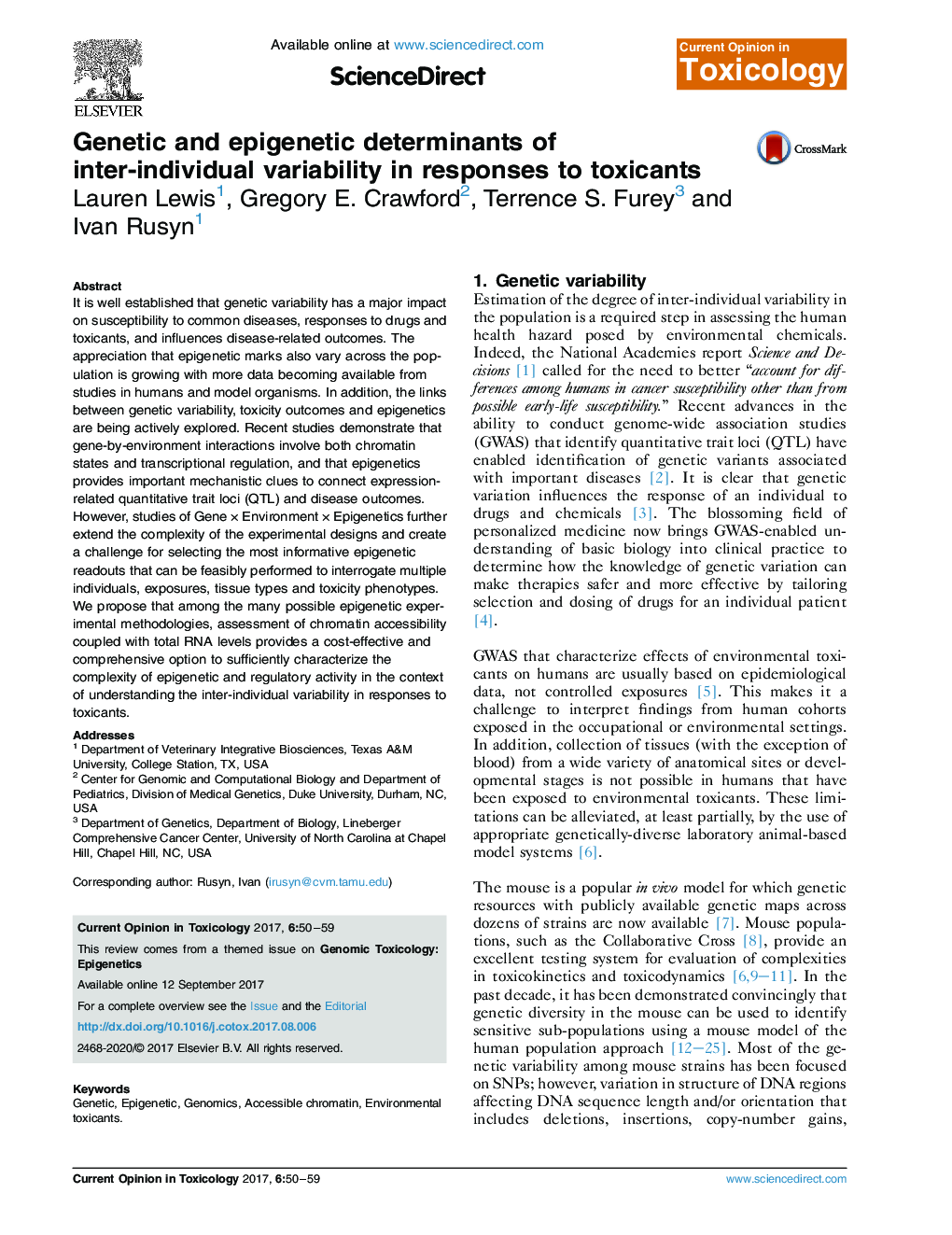| Article ID | Journal | Published Year | Pages | File Type |
|---|---|---|---|---|
| 5789441 | Current Opinion in Toxicology | 2017 | 10 Pages |
â¢Genetic variability is a major driver for susceptibility to disease.â¢Recent studies identified epigenetic variability factors linked to genetic variants.â¢Environmental agents may cause toxicity through epigenetic mechanisms.â¢Environmental effects on the epigenome in the context of genetic variability is a budding research area.â¢Studies of Gene Ã Environment Ã Epigenome can provide important mechanistic clues in toxicology.
It is well established that genetic variability has a major impact on susceptibility to common diseases, responses to drugs and toxicants, and influences disease-related outcomes. The appreciation that epigenetic marks also vary across the population is growing with more data becoming available from studies in humans and model organisms. In addition, the links between genetic variability, toxicity outcomes and epigenetics are being actively explored. Recent studies demonstrate that gene-by-environment interactions involve both chromatin states and transcriptional regulation, and that epigenetics provides important mechanistic clues to connect expression-related quantitative trait loci (QTL) and disease outcomes. However, studies of Gene Ã Environment Ã Epigenetics further extend the complexity of the experimental designs and create a challenge for selecting the most informative epigenetic readouts that can be feasibly performed to interrogate multiple individuals, exposures, tissue types and toxicity phenotypes. We propose that among the many possible epigenetic experimental methodologies, assessment of chromatin accessibility coupled with total RNA levels provides a cost-effective and comprehensive option to sufficiently characterize the complexity of epigenetic and regulatory activity in the context of understanding the inter-individual variability in responses to toxicants.
